Prester John – Presbiteri Iohannis…
by
Abraham Ortelius
A fake news story…
Detail
Date of first edition: 1576
Date of this map: 1598
Dimensions (not including margins): 37,5 x 54 cm
Condition: excellent. Sharp copper engraving printed on strong paper. Old colouring. Wide margins with mminor repairs in top corners
Condition rating: A+
Verso: text in French
Map reference: Van der Krogt 8720:31; Van den Broecke 175
From: Theatrum Orbis Terrarum. Van der Krogt 31:351, page 114
Price (without VAT, possibly to be added): €1 200,00 (FYI +/- $1 332,00 / £1 068,00)
Unless otherwise specifically stated on this map page, we charge the following expedition costs in euro (unfortunatelly, gone up with Covid, but still too low in reality!):
– Benelux: 40 euro
– Rest of Europe: 60 euro
– Rest of the World: 100 euro
In stock
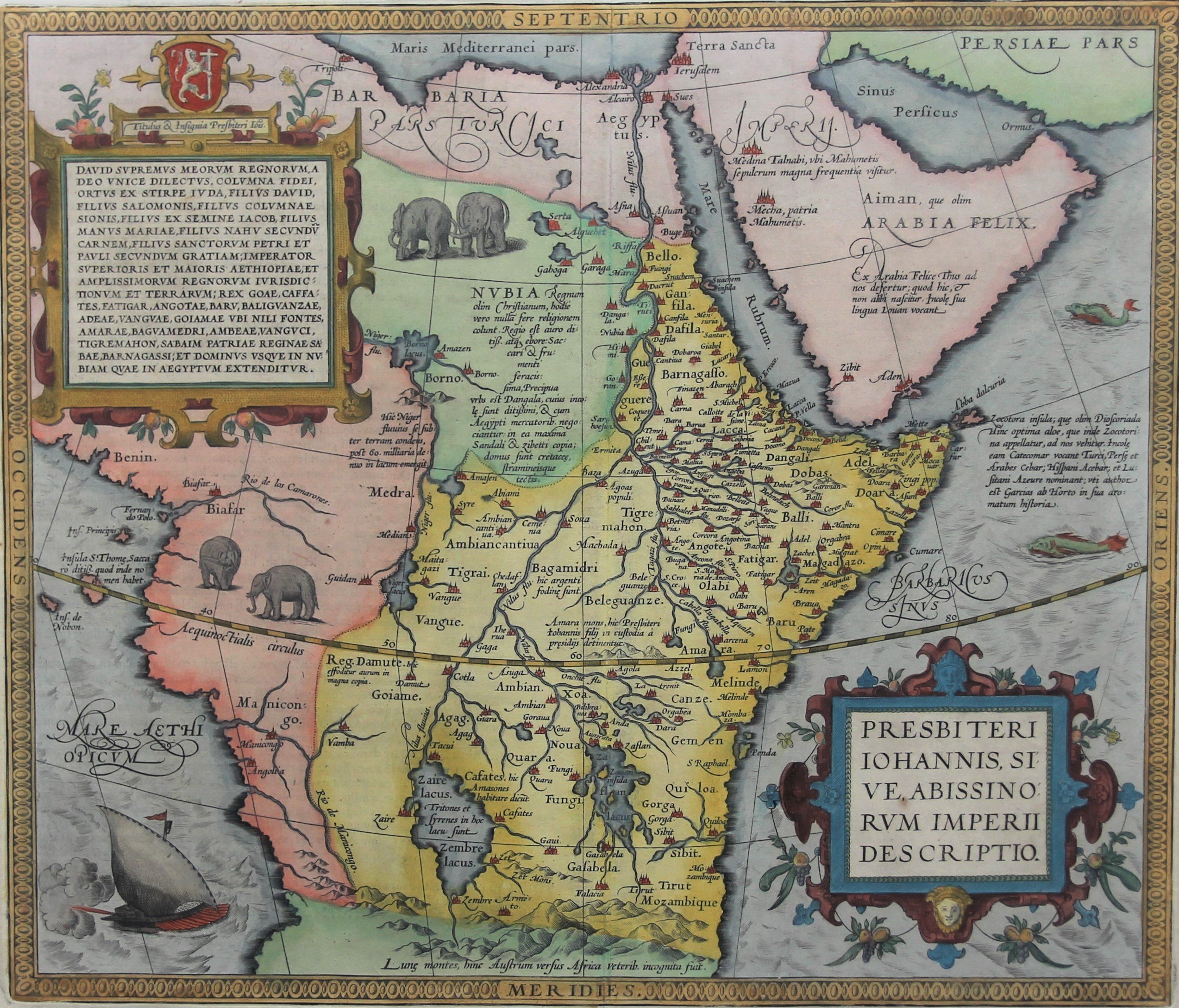
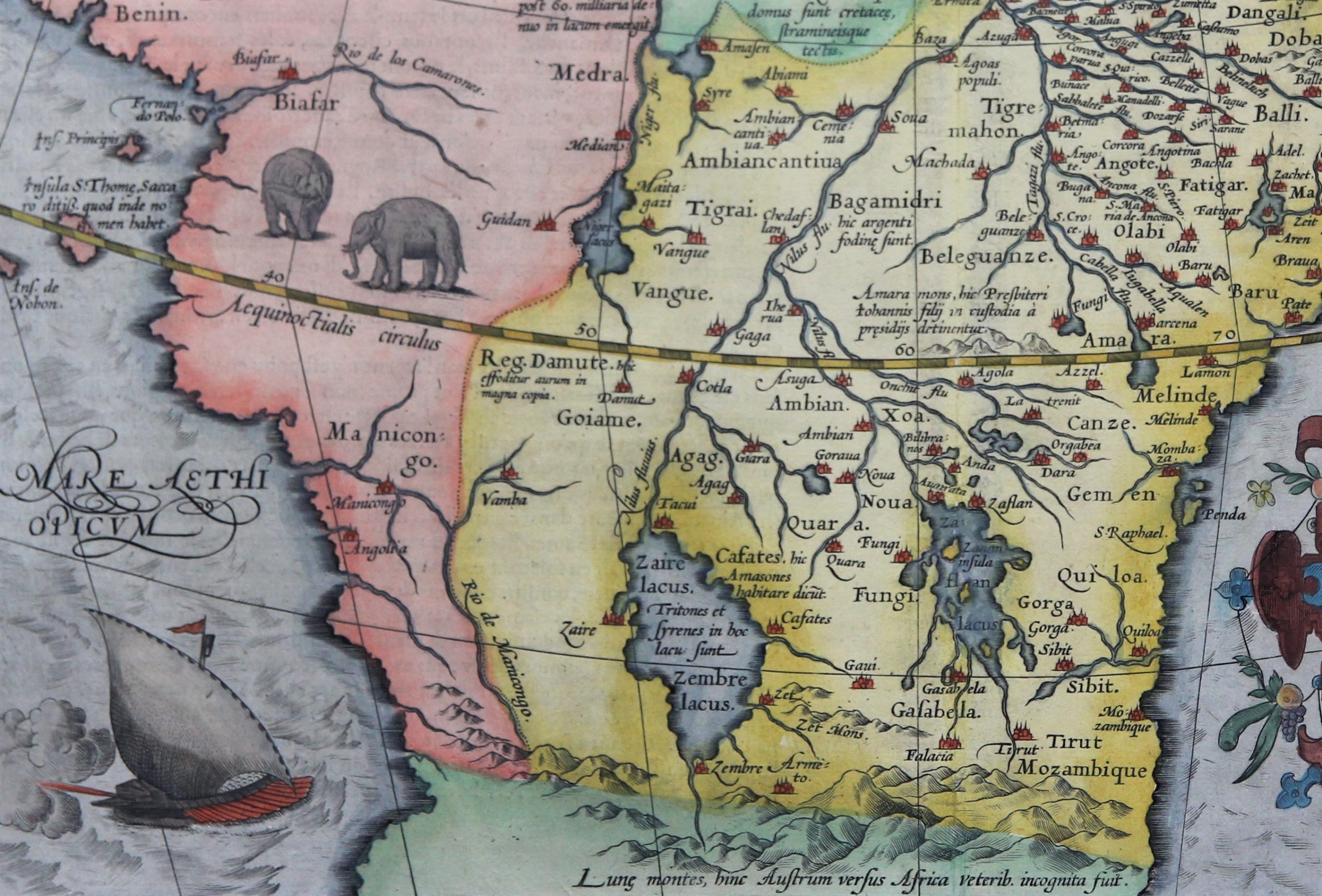
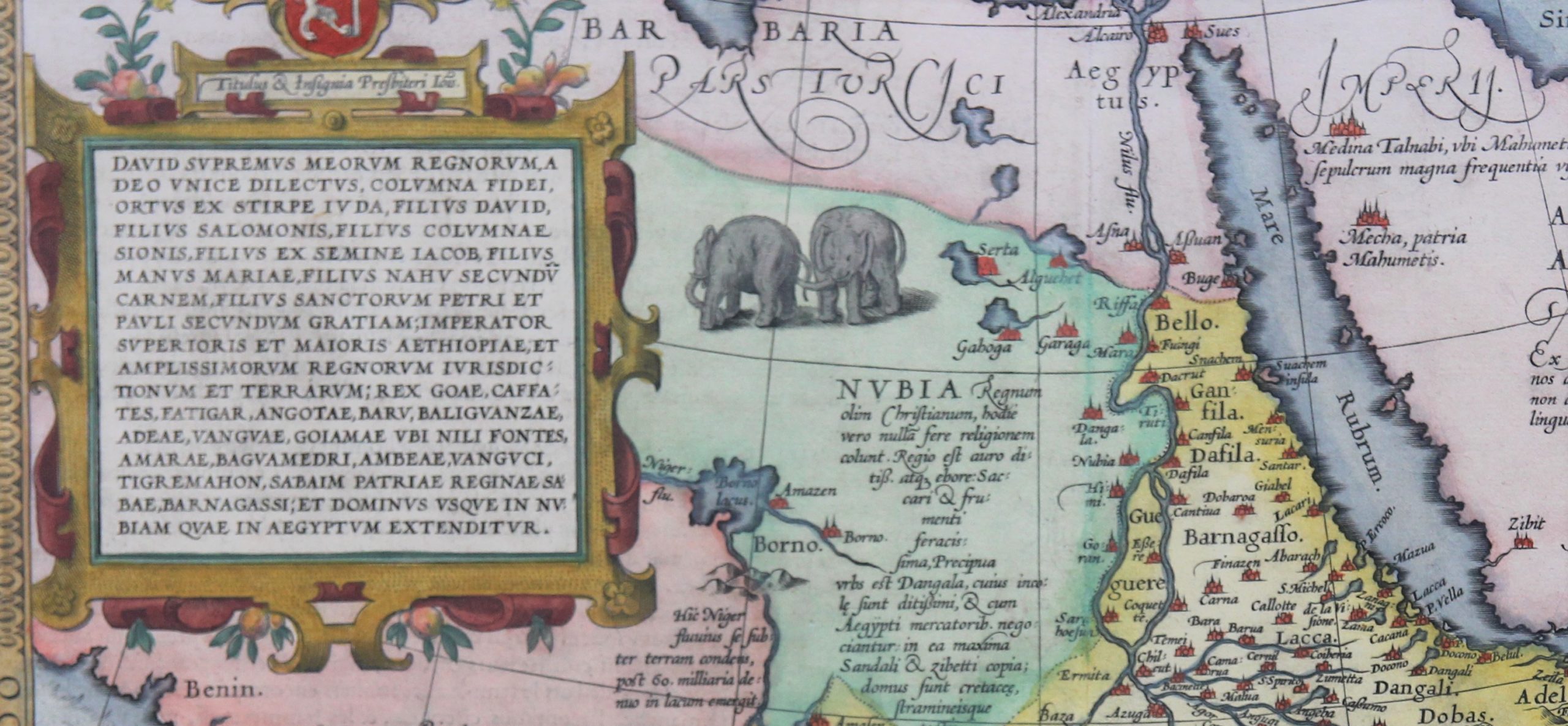
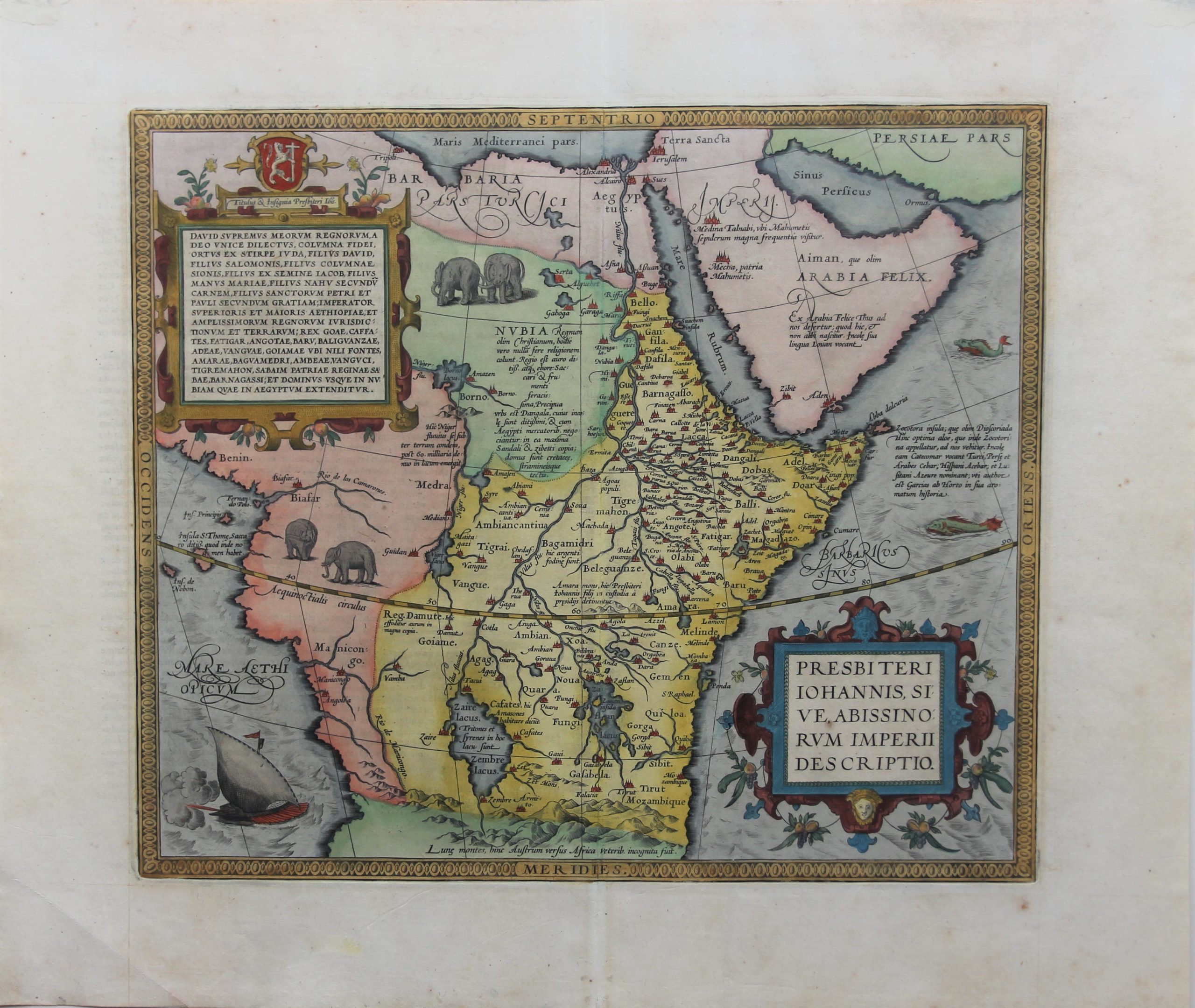
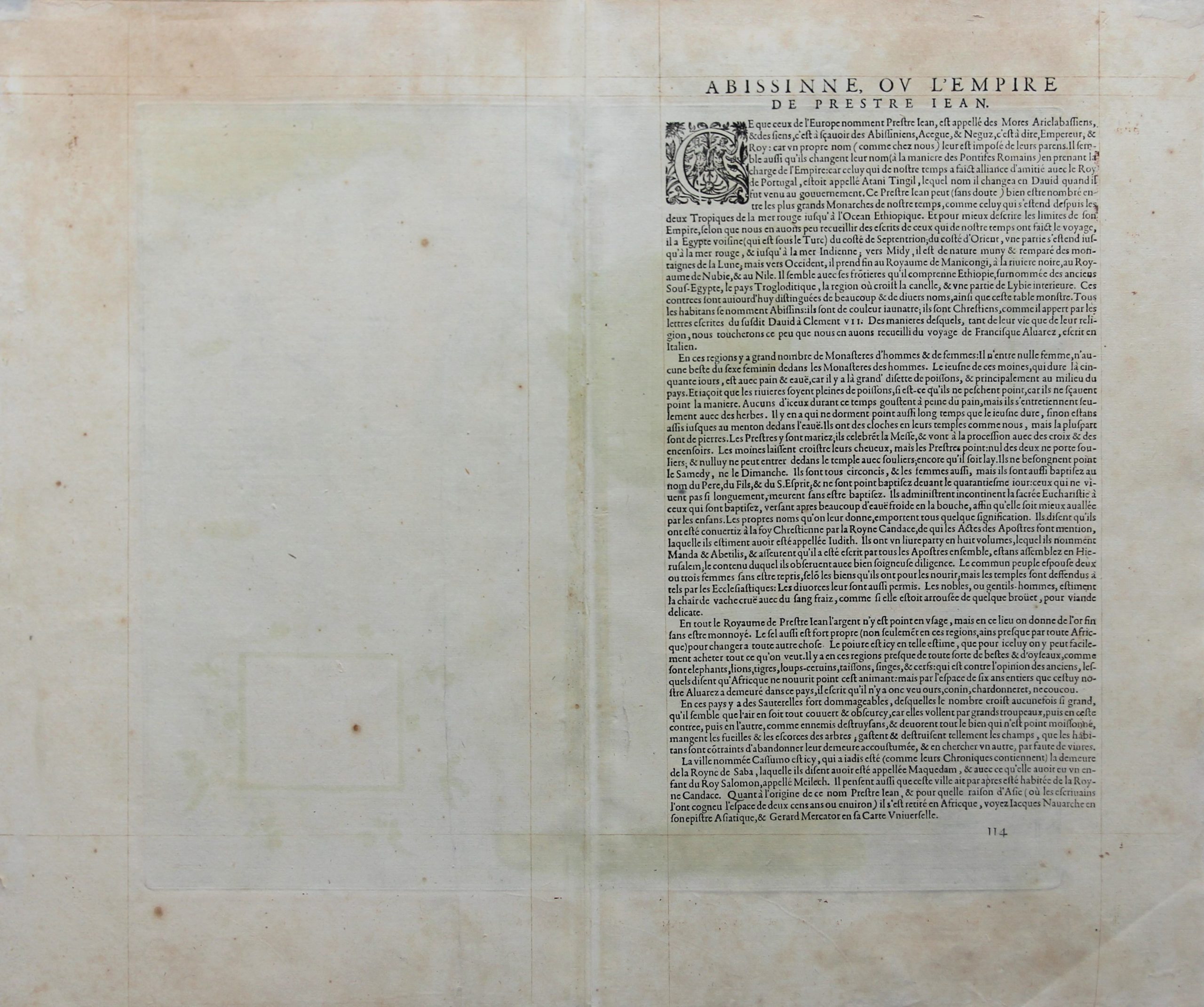
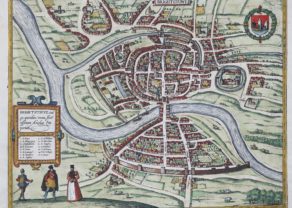
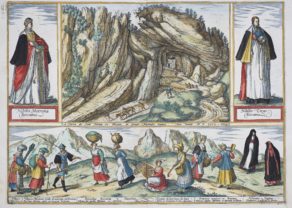
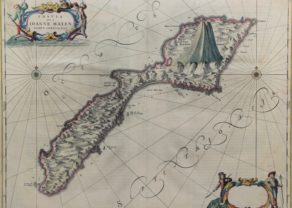

Prester John or how fake news survives…
The Medieval saga of Priest John is too interesting not to be told here. It also illustrates that even a professional mapmaker as Ortelius sometimes made mistakes.
He describes Priest John in 1570 as one of the greatest monarchs of the world. When the crusader kingdoms, in particular that of Raymond of Antioch, came increasing pressure from the Saracens, one Hugh, bishop of Jabala (now in Syria) applied in 1145 to Pope Eugene III for help. The latter replied that a Nestorian priest and king would have recaptured the city of Ecbatana in Persia. This created the myth that a powerful Christian king, priest John, living in Central Asia. “If contacted” King John would come to the rescue of the Crusaders.
For several centuries thereafter repeated and fruitless searches (with participation of the Polo family) were conducted to localize the Christian Kingdom. misconceptions and deceptions continued. The Western world finally came to the conclusion that this kingdom was not in Asia. However and unfortunately, the myth continued to live, since the location of the priest (who, in the meantime, must have become very old) was simply moved to Abyssinia during the fourteenth century. Portuguese Henry the Navigator even organized a search over land to the kingdom.
In the sixteenth century, mapmakers started producing maps of Prester John, depicted as a seated and crowned king in Ethiopia (e.g. Diogo Homem and Gemma Frisius in 1522):
The map of Ortelius set the standard for this type, of card, which itself was based on a wall map in eight parts of Gastaldi in 1564. Ortelius shows no incumbent king, but states that his sons were now detained in the mountains of Amara. In the left cartouche Ortelius lists of titles from the king, which also include “descendant of King David”. The Myth (also shown on the map of Africa Gerard Mercator and Hondius jr. dies a quiet death in the seventeenth century.
More speculation:
Prester John’s domain was said to have extended from the ruins of Babylon to beyond India. Since that region was roughly the extent of the realm of Alexander the Great (356 BC – 323 BC, it is possible that legends involving the actual historical figure of the King of Macedon influenced the legends of the imaginary Eastern king.
The story of Prester John (his name is derived from the French Prêtre, which indicates he is therefore both priest and king) is known today from almost 100 manuscripts, written in several languages, including Hebrew. The first authentic mention of Prester John occurs in the Chronicle of Otto, Bishop of Freising, in 1145, and the legend endured for centuries.
Original title: Presbiteri Iohannis, sive, abissinorum Imperii Descriptio